When it comes to building the perfect wardrobe, understanding fabric types is essential. Whether you’re shopping for a casual summer dress or a luxurious evening gown, the material can make all the difference in terms of comfort, durability, and style. In this Fabric Guide, we’ll break down the most common types of fabrics, their properties, and how they fit into your fashion choices. This blog will give you a complete understanding of the different fabric types and how to choose the right one for any occasion.
The Importance of Choosing the Right Fabric Types
Fabrics not only define the look of your clothing but also affect the feel, functionality, and longevity of your outfits. Each fabric has its own set of characteristics that influence how it wears over time, how breathable it is, and how easy it is to maintain. Choosing the right fabric types for your clothing can help you achieve the perfect blend of style and comfort.
Let’s take a deeper look into some of the most common fabric types and how they can enhance your wardrobe.
1. Cotton: The Classic All-Rounder
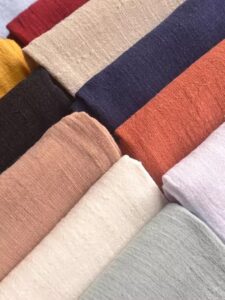
Cotton is undoubtedly one of the most popular fabric types due to its versatility and comfort. It’s a natural fiber that’s soft, breathable, and easy to care for, making it perfect for everyday wear. Whether you’re opting for casual T-shirts, summer dresses, or comfy loungewear, cotton can be your go-to fabric for effortless style.
Why Choose Cotton?
- Breathable: Cotton allows air to circulate, making it ideal for hot climates or active days.
- Absorbent: It easily absorbs moisture, helping you stay cool and dry.
- Hypoallergenic: Cotton is gentle on the skin, making it suitable for people with sensitive skin.
- Durable: With proper care, cotton garments can last a long time, even with frequent washing.
When to Wear Cotton?
Cotton is the best choice for casual outfits and everyday clothing like jeans, T-shirts, and cotton dresses. It’s also perfect for summer wear, thanks to its breathable nature.
2. Silk: The Luxurious Fabric Type
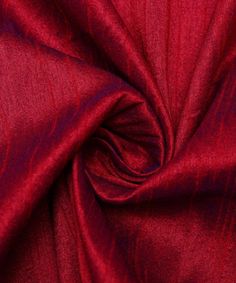
If you’re looking for elegance and sophistication, silk is one of the most desirable fabric types to consider. Silk is a natural fiber produced by silkworms and is known for its smooth, glossy texture and luxurious appearance. Often associated with high-end fashion, silk drapes beautifully and feels delicate against the skin.
Why Choose Silk?
- Luxurious Feel: Silk is soft and smooth, offering a feeling of luxury.
- Beautiful Drape: Silk garments hang and move gracefully, enhancing your silhouette.
- Temperature Regulation: Silk helps regulate body temperature, keeping you cool in the summer and warm in the winter.
- Shiny Finish: The natural sheen of silk gives it an elegant, polished look.
When to Wear Silk?
Silk is often used in formalwear, such as evening gowns, bridal dresses, and dress shirts. It’s perfect for events where you want to make a statement with your style.
3. Linen: The Warm-Weather Essential
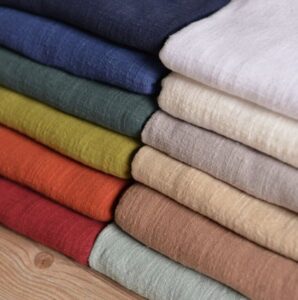
Linen is another natural fiber, made from the flax plant, and is renowned for its ability to keep you cool in warm weather. As one of the oldest fabric types in history, linen has stood the test of time due to its lightweight and breathable qualities. Its slightly textured appearance gives it a laid-back, casual vibe.
Why Choose Linen?
- Breathable: Like cotton, linen allows air to flow, making it a favorite for hot and humid climates.
- Quick Drying: Linen absorbs moisture quickly and dries faster than most other fabrics.
- Durable: Linen garments can last for years, becoming softer and more comfortable with each wash.
- Eco-Friendly: Linen production has a lower environmental impact compared to synthetic fabrics.
When to Wear Linen?
Linen is perfect for summer outfits, beachwear, and casual vacation attire. Think lightweight linen shirts, sundresses, and wide-leg trousers for ultimate comfort in the heat.
4. Wool: The Ultimate Cold-Weather Fabric Type
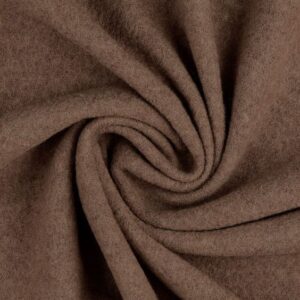
Wool is one of the best fabric types for insulation, making it perfect for cold weather. This natural fiber, derived from sheep, is highly versatile and comes in various forms, including merino wool, cashmere, and alpaca wool. Wool’s ability to retain heat while remaining breathable makes it a popular choice for winter clothing.
Why Choose Wool?
- Warmth: Wool traps heat, keeping you warm in cold conditions.
- Moisture-Wicking: Wool fibers absorb moisture, drawing sweat away from your skin.
- Odor-Resistant: Wool is naturally resistant to odors, making it ideal for multiple wears.
- Durable: Wool garments are long-lasting and resistant to wear and tear.
When to Wear Wool?
Wool is ideal for winter clothing, including coats, sweaters, scarves, and gloves. Wool suits are also popular in colder months due to their warmth and breathability.
5. Polyester: The Synthetic Staple
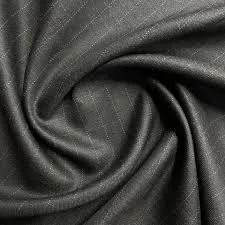
Polyester is one of the most widely used synthetic fabric types due to its affordability and durability. While it’s often blended with other fibers to enhance its qualities, pure polyester is known for being wrinkle-resistant and easy to maintain. It has a wide range of applications, from sportswear to formal wear.
Why Choose Polyester?
- Durable: Polyester is highly resistant to wear, making it ideal for everyday use.
- Wrinkle-Resistant: Polyester maintains its shape and appearance even after washing, making it low-maintenance.
- Moisture-Wicking: Modern polyester fabrics can wick moisture away from the body, making them suitable for activewear.
- Quick Drying: Polyester dries faster than natural fibers, making it a convenient option for travel.
When to Wear Polyester?
Polyester is commonly used in casual clothing, activewear, and outerwear. It’s also a good option for travel-friendly garments, as it resists wrinkles and dries quickly.
6. Rayon: The Versatile Synthetic Fiber
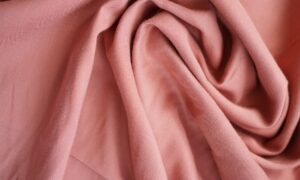
Rayon is a semi-synthetic fiber made from natural sources like wood pulp. It’s often considered a substitute for silk due to its soft, smooth texture and ability to drape well. Rayon is highly versatile, making it suitable for a variety of clothing styles, from casual wear to formal dresses.
Why Choose Rayon?
- Soft and Smooth: Rayon feels gentle on the skin, making it comfortable for all-day wear.
- Breathable: Despite being a synthetic fiber, rayon is lightweight and breathable, suitable for warm climates.
- Affordable Alternative: Rayon offers the luxurious look of silk at a more affordable price point.
When to Wear Rayon?
Rayon is a great option for lightweight summer dresses, blouses, and skirts. It’s also used in formalwear, as its smooth texture resembles silk.
7. Denim: The Casual Staple
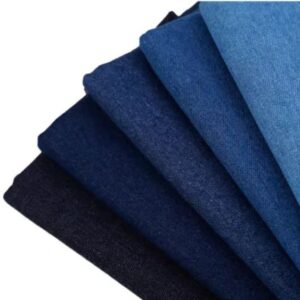
Denim is a durable cotton fabric that’s best known for its use in jeans and casual wear. As one of the most recognizable fabric types, denim is valued for its sturdiness and classic style. It’s typically woven in a twill pattern, which gives it a diagonal ribbing.
Why Choose Denim?
- Durable: Denim is a strong, long-lasting fabric that can withstand heavy use.
- Versatile: Denim is available in a variety of washes and styles, making it suitable for everything from jeans to jackets.
- Casual and Trendy: Denim never goes out of style and can be dressed up or down.
When to Wear Denim?
Denim is perfect for casual wear, including jeans, denim jackets, and skirts. It’s a year-round fabric that works well in both summer and winter.
8. Chiffon: The Delicate Choice
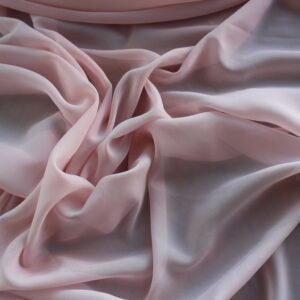
Chiffon is a lightweight, sheer fabric that’s often used in evening wear and formal dresses. It’s one of the more delicate fabric types, made from silk or synthetic fibers like nylon. Chiffon is known for its flowing drape and ethereal appearance.
Why Choose Chiffon?
- Lightweight and Sheer: Chiffon offers an airy, delicate look that’s perfect for formal occasions.
- Elegant Drape: The soft, flowing nature of chiffon adds a romantic touch to any outfit.
- Versatile: Chiffon can be used for overlays, sleeves, or full dresses, creating an elegant and light feel.
When to Wear Chiffon?
Chiffon is ideal for special occasions, including weddings, evening events, and cocktail parties. It’s often used in bridesmaid dresses, gowns, and blouses.
How to Choose the Right Fabric Types for Your Wardrobe
With so many fabric types to choose from, it’s essential to understand the characteristics of each material and how it fits into your lifestyle. When deciding which fabric to wear, consider the following factors:
- Occasion: Are you dressing for a casual day out, a formal event, or an active day?
- Climate: Choose breathable fabrics like cotton or linen for hot weather and insulating fabrics like wool for colder climates.
- Comfort: Some fabrics, like silk and cotton, are softer on the skin, while others, like polyester, offer more structure.
- Maintenance: Consider how easy it is to care for the fabric. Natural fibers like silk and wool may require special care, while synthetics like polyester are machine-washable.
Conclusion: Mastering Fabric Types for Fashion Freedom
Understanding fabric types is the key to making smart, stylish choices for your wardrobe. Each fabric offers unique qualities that can enhance your comfort, appearance, and overall experience when wearing your clothes. Whether you prefer the luxury of silk, the breathability of cotton, or the durability of denim, knowing the right fabric for the right occasion will help you create a versatile and fashionable wardrobe.
At WearMeOut, we prioritize both style and comfort, offering a variety of fabrics to meet your needs. Explore our latest collections and choose the perfect fabric for every moment in your fashion journey!

No Responses